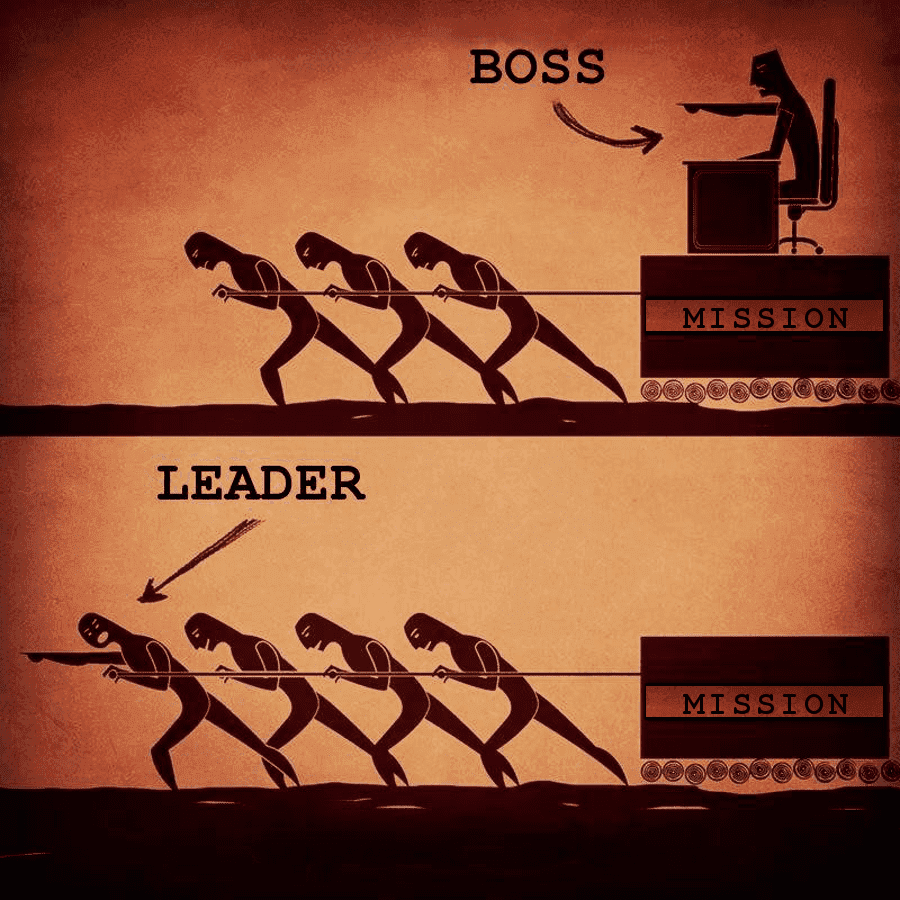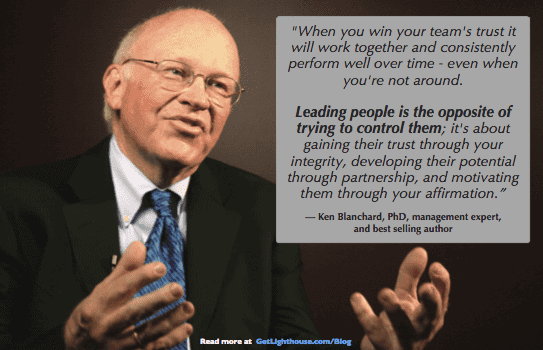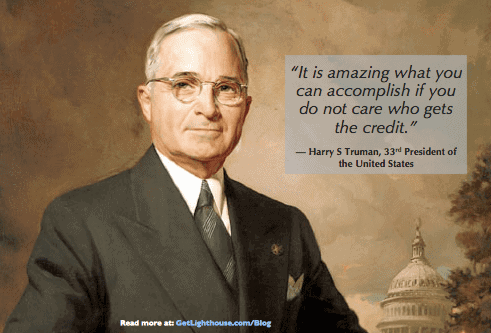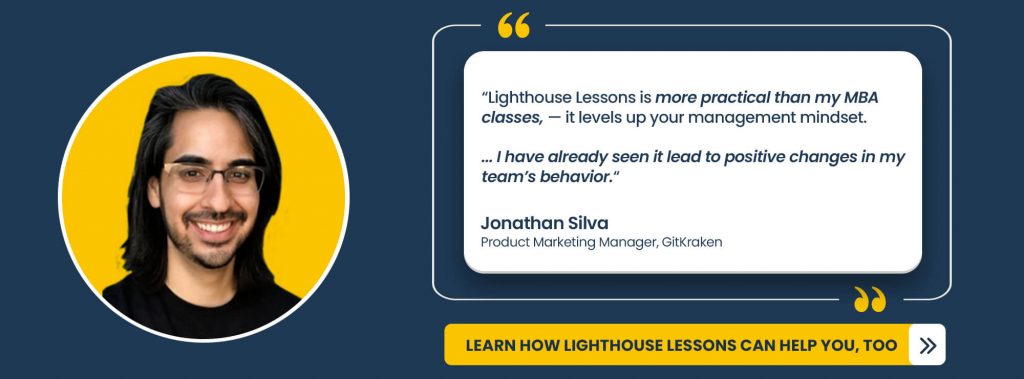First Follower, fifth follower, fiftieth follower. They're all the same, right?
Not quite.
Whether the change you're bringing is big or small, having a great First Follower can make all difference between standing alone, and getting full buy in and acceptance from those you're leading.
Start a Movement
I recently saw this inspiring TED Talk from Derek Sivers, which captured this message so well. Take a few minutes to enjoy:
While you may not be starting any dance parties on a hillside any time soon, there's a lot any leader can learn from Derek Siver's First Follower concept. Let's take a look.
How you can use the First Follower principle to be a better leader
So if we want to translate the hillside dancer to your leadership in at work, then the questions become:
- Why should I care about having a First Follower?
- How do you get a First Follower at work?
- How do you propel that into a movement?
Let's dig in.
Why should I care about having a First Follower?
"If I say do it, they're gonna do it. That's what leadership is all about." - Donald Trump on March 3, 2016
Donald Trump said the above in one of the GOP debates in regards to some controversial plans he had for dealing with terrorists.
Regardless of his other successes or leadership skills he may have, that statement is an all-time terrible one on leadership.
And from the response by those who would be given those orders, it showed they weren't going to do it just because he said so. Instead, he had to backtrack after hearing wide derision and resistance.

If you have ever tried to boss people around, you know that simply saying "do it" doesn't work very well; people bossed general do the minimum required only as long as they're forced to do it.
Given most of us in the workplace have few powers of coercion, leading by fear and orders will not take you nearly as far as leading from the heart.
"Leadership is not just what happens when you're there, it's what happens when you're not there.” - Ken Blanchard
What happens when you're not around?
One of the biggest challenges of leading is inspiring and motivating others.
It's what your team does when you're not around that can be the difference between success and failure.
If they're excitedly executing on your organization's mission and goals, you'll succeed.
If they see you more as a crazy person dancing on a hill alone, then you'll only get the bare minimum from them; they'll do just enough to collect a pay check and not get fired. They may even work against you, especially when you're not there.
As author and leadership expert Ken Blanchard wrote in The Heart of a Leader:

Getting a First Follower is a crucial, first step to building, and keeping, that trust as you bring change, get their buy-in, and effectively lead your team.
How do you get a First Follower at work?
Knowing that a First Follower is important to your success as a leader is just the first step. The question then becomes how to get a First Follower on board?
"It takes guts to be a First Follower! You stand out and brave ridicule, yourself. Being a First Follower is an under-appreciated form of leadership.
The First Follower transforms a lone nut into a leader. If the leader is the flint, the First Follower is the spark that makes the fire.” - Derek Sivers at [0:37]
Recognize what it takes.
The risk that someone takes by being the First Follower is much greater than anyone that comes after them. And as important for a leader, they are the start of momentum that can lead to a movement becoming a reality.
Yes, you as the the "lone nut on a hill” took the most risk, but that First Follower took the risk to turn you from that nut into a leader. Appreciate that, and you'll have the right mindset for finding that person and getting them on board.
Someone on your team is likely to be more passionate about the idea than others. They may bring more input, understand what you're trying to do better, and be fired up by the challenge or opportunity. Channel that to increase your chances of success. They are your First Follower.
Give them a key role in helping take the next steps. Make room for them and their ideas. Remember: "If the leader is the flint, the First Follower is the spark that makes the fire."

It's about both of you.
"This is key. You must be easy to follow!
... Notice the leader embraces [the First Follower] as an equal, so it's not about the leader anymore - it's about them, plural.” - Derek Sivers at [0:19]
If you're obsessed with it being *your* idea, it will be a lot harder to get very far with it. When you take possession of the idea, it's harder for others to see how they can contribute. It doesn't leave room for their input, or to take it places beyond your own initial ideas.
Think about what the core of what you're doing is: what is the outcome you're trying to get? What must happen versus can be flexible in how it's done? The flexibility represents opportunity for your First Follower (and many future ones).
Start small.
The biggest mistake of many leaders is to make an important decision on their own, and then present it to a large group without any input. This is a recipe for disaster.
It's hard to read minds. If you don't take the time to ask for input from those you're trying to lead, you're unlikely to know what they're most concerned and excited about.
Knowing concerns will help you overcome and anticipate objections. Meanwhile, knowing what excites them will help you tailor presenting your idea to what will motivate your team most. Without their input, you also miss out on making your movement more successful by tweaking things based on their feedback.
Leverage your one on ones.
If you're starting a movement, or need to make a significant change at work, using your one on ones to get buy in and input is a powerful way to ensure success, and find your First Follower. The privacy of the meeting can lead to valuable candor, and ensure you get a diversity of ideas instead of group think in a public setting.
Serial entrepreneur and investor Michael Wolfe walks through a great example of involving your team in key decisions in his blog post on the importance of one on ones:
"Imagine that in your Monday management meeting, your CEO tells the executive team that they are concerned about slowing revenue growth. They want to create a new plan by next Monday that slows spending growth. You take a note to work the problem with your team. Your week may then look like this:
You shared the problem with your team, worked it with them in your one on one's, then came prepared with a new plan the following Monday. And you:
- Did not have to scramble – you used meeting time that you already had scheduled.
- Did not panic anyone – you didn't have to schedule any last-minute emergency meetings.
- Gave your team time to generate ideas and contribute.
- Got a pulse on how your team is feeling and soothed concerns they may have.
- Came into the following Monday management meeting with a new plan and, more importantly are ready for a discussion of how the team took the news and what you can do to improve morale.
This is what rapid and efficient decision-making looks like."
By choosing the right time and place to communicate changes, and supporting anyone who is willing to step up, you create an environment to support a First Follower, and the birth of your movement.
How do you propel it into a movement?
"Now here come 2 more, then 3 more. Now we've got momentum. This is the tipping point! Now we've got a movement!
As more people jump in, it's no longer risky. If they were on the fence before, there's no reason not to join now. They won't be ridiculed, they won't stand out, and they will be part of the in-crowd, if they hurry.” - Derek Sivers at [1:16]
While it's important and key to get that First Follower, your work is not done once you have them. As you can see from the dancer on the hill, things didn't tip until there were a few people dancing with them.
And a movement, like from the iconic film, Spartacus, doesn't work unless it's embraced by many; you'll notice in the clip above, it took longer for the first few followers to come forward to support and protect Spartacus, but it wouldn't have worked without everyone saying, "I'm Spartacus!"
Don't rely on the Teacher's Pet.
One of the easy mistakes to make as a leader is to fall in a rut. You may have a go-to team member that seems like the right person to always be your First Follower. Be careful. It can create a series of problems for you:
- They may not represent the team: What they think may be different than their colleagues. This means you'll only get their buy in from talking to them, not everyone's.
- The team may resent them: They may appear to be a hard worker and easy to get along with from your perspective. To the rest of their team, they may be considered a "teacher's pet” or "brown noser," if they receive preferential treatment.
- Others feel marginalized: If you're always soliciting feedback and giving opportunities to certain people on your team it can make others feel unvalued and that their input doesn't matter.
Instead, consider who the best people on your team would be for each situation. If you can't talk to everyone, involving the people that would be most representative of everyone else, or the most qualified for a situation, will be your best way to avoid potential pitfalls and politics.

Listen to your people and act.
While it's great to use private meetings, like a one on one, to talk about a potential change and recruit your early supporters, listening is not enough.
You need to take action based on what you hear; use critics and skeptics to help shape the idea and how you present it.
You'd want to learn what a customer does and doesn't like about your company's product or service, so why wouldn't you treat your employees like customers when it comes to changes and new opportunities as well?
In a NY Times interview, Jane Park, CEO of Julep, reflects on how she uses this principle to lead her company:
"It's not collaborative if you listen, but then go off and do your own thing. You have to be willing to sit there and hear input and be willing to let the person impact the final decision. That takes strength, but it also takes vulnerability to be open to the fact that maybe what you had in mind is not perfect, or that there was one element you didn't think about, or that there's a way to make it better. You have to be open to that possibility, but you also have to know what you want.
It's not about giving up control and saying, hey, whatever everybody wants. It's not consensus. Collaboration isn't consensus. It's deliberate, and it's a way of letting people in that is genuine but still very results-focused."
As Park notes, you're not giving up on your idea. Instead, you're improving and refining it based on input from your team. They work every day on different parts of your business, which you do not always have the same visibility into. Why wouldn't you want those insights to help improve the idea, and its likelihood of success?
The byproduct of listening and making changes is powerful:
- You build trust: They feel heard and see that when they share feedback with you, things happen. You'll need this especially when you have to do unpopular things.
- They take ownership: When you make room for their ideas, they feel a part of it and more willing to accept it than when it was your idea forced on them.
- Avoid pitfalls: If you can avoid the biggest pitfalls and objections from your team, you're much more likely to tip your idea into a movement that everyone supports.
Starting a movement is no accident. It takes intentional work by a leader. You must find and support a First Follower, and listen and make changes as needed to tip your movement.
Don't go it alone. If you want to transform from a nut on a hill to a leader, start with the First Follower.
Want to build up your management skills? Lighthouse Lessons can help you.
Our bite size, highly actionable programs are perfect for even the busiest of managers. Become a better leader like Jonathan Silva did by learning more and signing up here.






